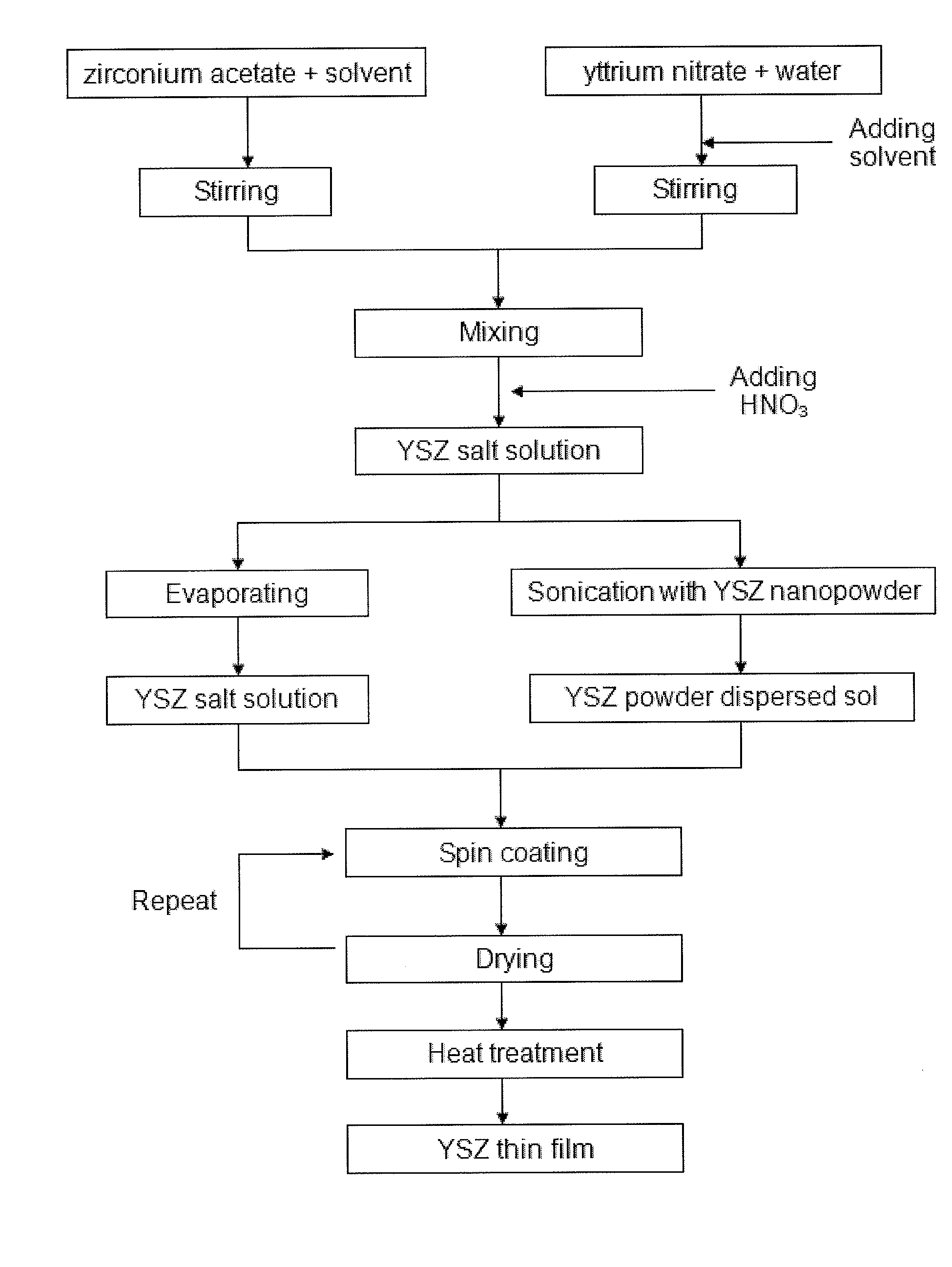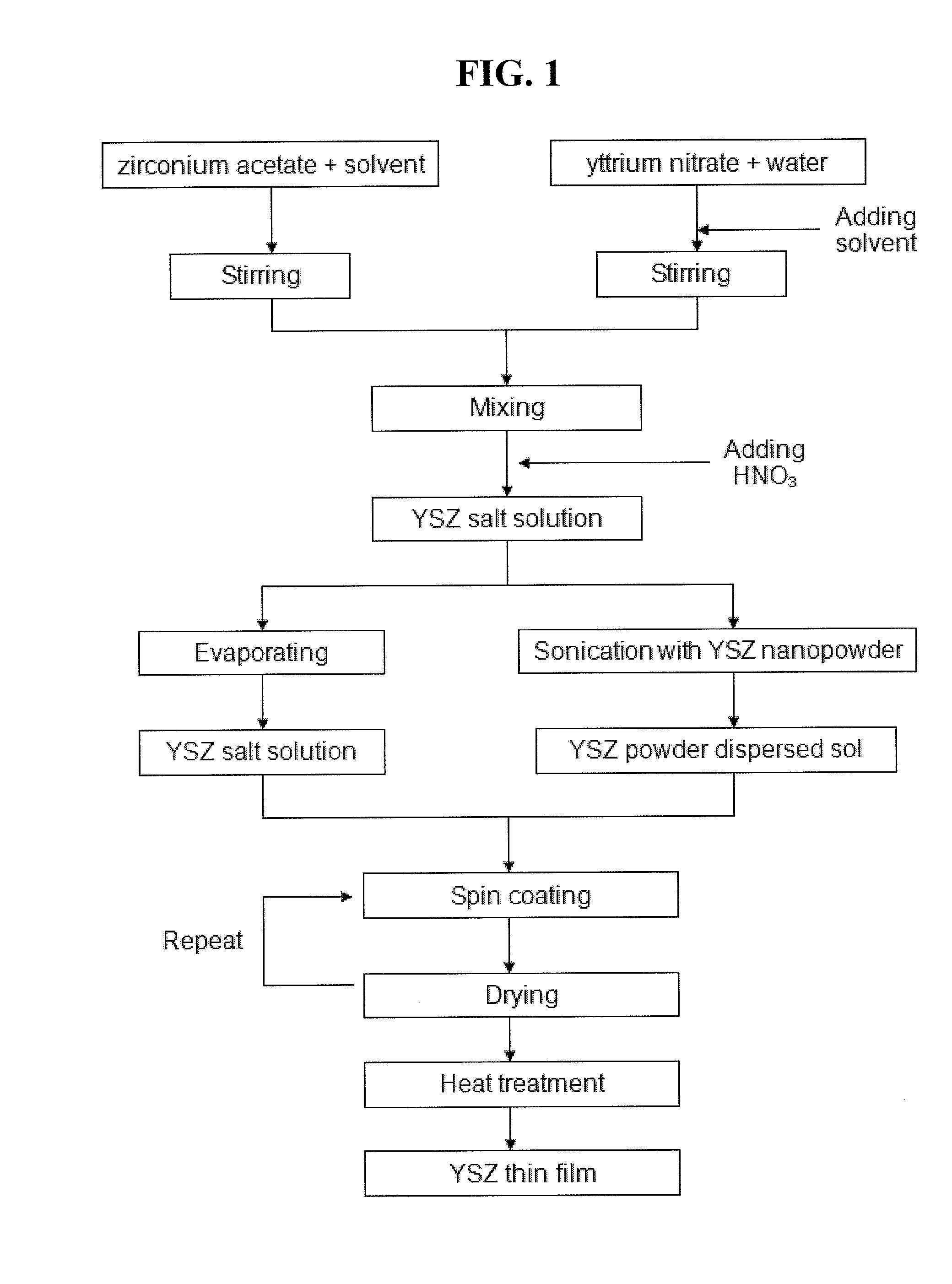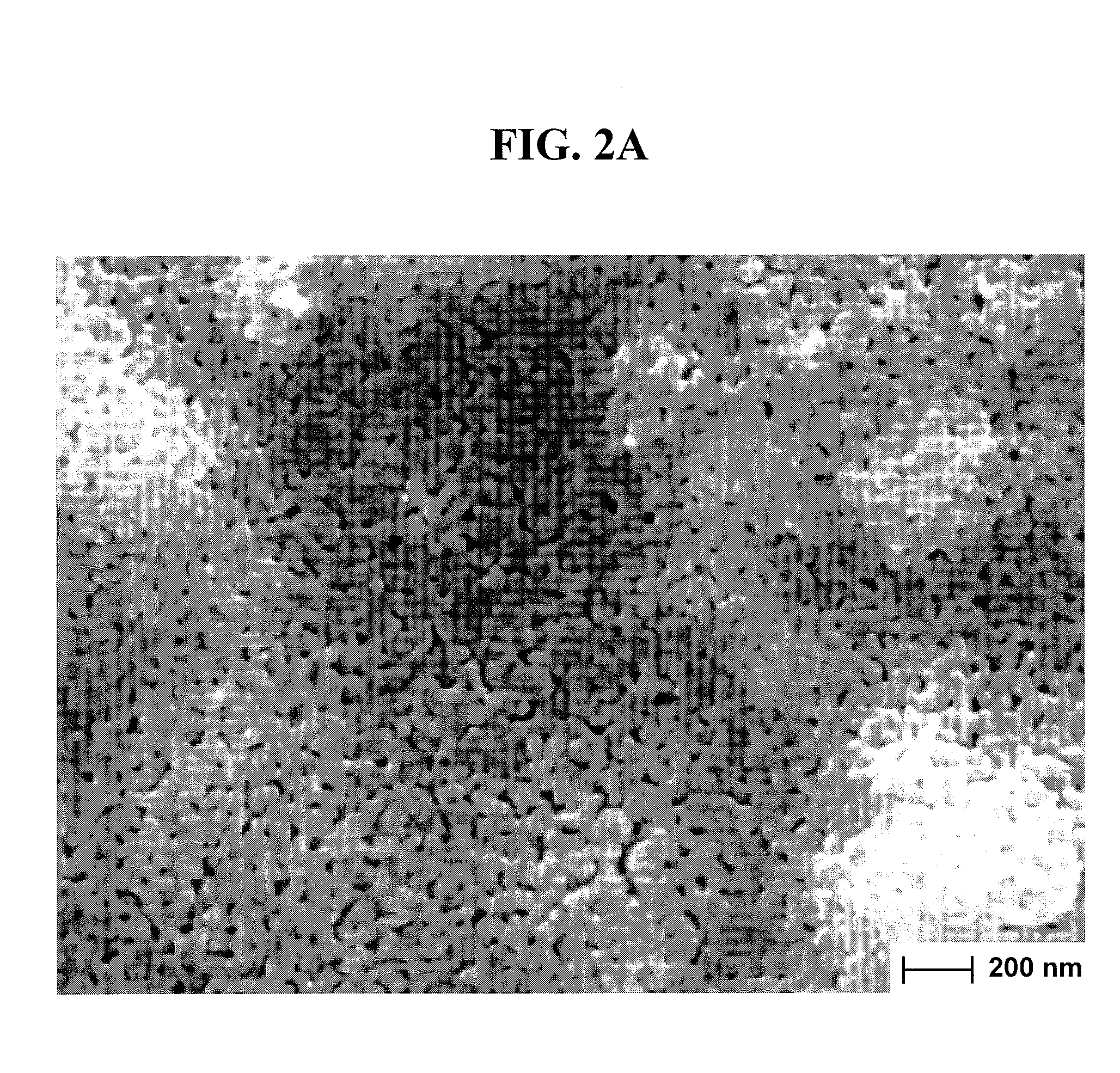Method for preparing metal oxide sol, method for preparing metal oxide thin film using said sol, and solid oxide fuel cell comprising said thin film
- Summary
- Abstract
- Description
- Claims
- Application Information
AI Technical Summary
Benefits of technology
Problems solved by technology
Method used
Image
Examples
example 1
Preparation of YSZ Thin Film Structure (1)
[0046]A YSZ thin film structure was prepared by following procedures, which are schematically shown in FIG. 1.
1-1. Preparation of YSZ Powder Dispersed Sol and YSZ Salt Solution
[0047]a) Ethanol as a solvent, DMF (C3H7NO) as a solvent and drying adjuster, and acetylacetonate (C5H8O2) as a chelating agent were mixed at a volume ratio of 30:40:30 (%), and then stirred at room temperature for 30 min to form a dispersion solution.
[0048]b) 82.6 g of the dispersion solution was added to 53.21 g of zirconium acetate in dilute acetic acid, then stirred for 1 hour, thus obtaining a first salt solution. Another 82.6 g of the dispersion solution was added to 16.5 g of yttrium nitrate hexahydrate (Y(NO3)3.6H2O), then stirred for 30 min, thus obtaining a second salt solution. The first and the second salt solutions were mixed together and stirred at room temperature for 2 hours, then nitric acid (HNO3) as a catalyst was added to obtain a YSZ salt solution ...
example 2
Preparation of YSZ Thin Film Structure (2)
2-1. Preparation of YSZ Powder Dispersed Sols
[0060]3.3 g of yttrium nitrate hexahydrate (Y(NO3)3.6H2O) and 20.49 g of zirconyl (IV) chloride octahydrate (ZrOCl2.8H2O) were dissolved in a mixed solvent in which diethyleneglycol monobutyl ether, ethanol and water were mixed at a volume ratio of 40:40:20 (%), and then 20 wt % of acetyl acetone as a chelating agent was added thereto, so as to obtain a first salt solution.
[0061]1 wt % of YSZ nanopowder (particle size: 20-30 nm, specific surface area: 160 m2 / g, available from fuelcellmaterials.com) was dispersed in a mixed solvent in which diethyleneglycol monobutyl ether, ethanol and water were mixed at a volume ratio of 40:40:20 (%), and irradiated with ultrasonic waves (60% power) to obtain a second salt solution.
[0062]The first and the second salt solutions were mixed at a volume ratio of 50:50 to obtain a YSZ powder dispersed sol.
2-2. Preparation of YSZ Thin Film Structure
[0063]The YSZ powder...
example 3
Preparation of SOFC Unit Cell
3-1. Preparation of YSZ Thin Film Structures
[0066]A first structure, in which a YSZ thin film having a thickness of 1 μm is formed on the substrate, was prepared in the same manner as in Example 1, with exception that the spin-coating was conducted as following steps:
[0067]i) spin-coating once with the 10 wt % YSZ powder dispersed sol;
[0068]ii) spin-coating once with the 5 wt % YSZ powder dispersed sol;
[0069]iii) spin-coating twice with the YSZ salt solution (2 mol / L); and
[0070]iv) spin-coating twice with the YSZ salt solution (1 mol / L).
[0071]In the first structure, the thickness of the YSZ salt solution layer formed in steps iii) and iv) was in a range of 50 to 400 nm.
[0072]Further, a second structure, in which a YSZ thin film having a thickness of 0.5 μm is formed on the substrate, was prepared in the same manner as in Example 1, with exception that the spin-coating was conducted as following steps:
[0073]i) spin-coating once with the 5 wt % YSZ powder ...
PUM
| Property | Measurement | Unit |
|---|---|---|
| Temperature | aaaaa | aaaaa |
| Thickness | aaaaa | aaaaa |
| Particle size | aaaaa | aaaaa |
Abstract
Description
Claims
Application Information
 Login to View More
Login to View More - R&D
- Intellectual Property
- Life Sciences
- Materials
- Tech Scout
- Unparalleled Data Quality
- Higher Quality Content
- 60% Fewer Hallucinations
Browse by: Latest US Patents, China's latest patents, Technical Efficacy Thesaurus, Application Domain, Technology Topic, Popular Technical Reports.
© 2025 PatSnap. All rights reserved.Legal|Privacy policy|Modern Slavery Act Transparency Statement|Sitemap|About US| Contact US: help@patsnap.com



